Starting a home garden can be challenging, but it has several benefits. A home garden adds beauty to your home. The plants also provide a beautiful environment for you to enjoy.
An easy care indoor plant is grown mainly for residences and offices. It is mostly used for decoration and to add complexity to a bland environment.
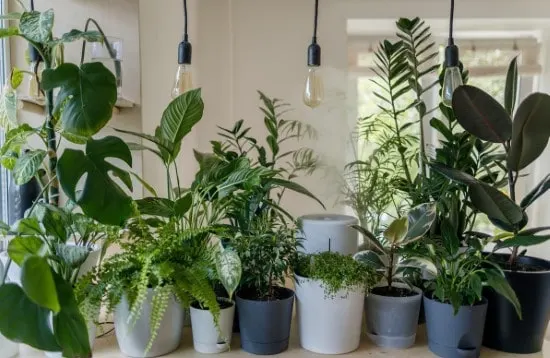
Why Start a Garden?
Taking care of house plants can be very relaxing. Studies have shown that taking care of indoor plants can reduce stress, improve your productivity, raise your mood and make you live happily.
Besides improving your overall mood, a home garden adds beauty to your house and helps in reducing indoor air pollution. And with the easy care indoor plants that we have listed in this article, you can easily have a mini-garden right inside your house.
As a beginner, it can be quite difficult to select your first few plants for an indoor garden. So, for your convenience, we have listed ten different varieties of easy care indoor plants that you can use for your indoor garden.
1. Devil’s Ivy
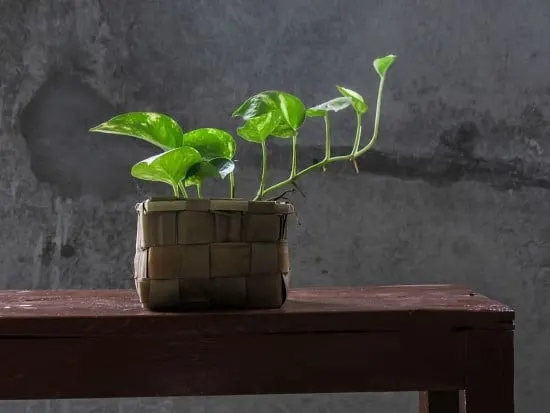
Devil’s Ivy, also known as Pothos, are tropical vine plants that have beautiful, heart-shaped leaves. Their simple, yet attractive looks have made them a popular choice for many indoor plant owners.
Native to the Solomon Islands, Devil’s Ivy are tough little plants and can survive in harsh conditions.
Ideal Growing Conditions:
These plants prefer a well-lit spot in the house, you can place them close by windows but don’t put them in direct sunlight. You can tell that your Devil’s Ivy is not getting enough light its leaves are getting pale.
You will need to mist the plant occasionally and provide plant food once a month.
The USDA hardiness zones for Devil’s Ivy plants are 10-12.
2. Peace Lily or Spathiphyllum
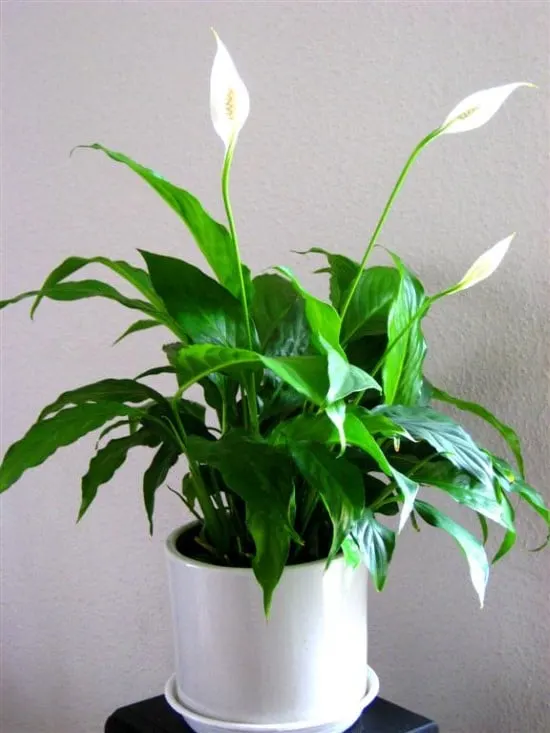
Peace lilies are great for purifying indoor air and increasing the humidity levels in your house. They also absorb mold that floats in the air around them, further improving air quality.
These plants are also incredibly pretty to look at, their white flowers combined with the green leaves make for a very good looking indoors plant.
Ideal Growing Conditions:
Peace lilies prefer a good amount of indirect sunlight but can also live in high shade conditions. You should keep their soil moist but take care to not get it soggy.
The USDA hardiness zones for Peace Lilies are 11-12.
3. Bromeliad
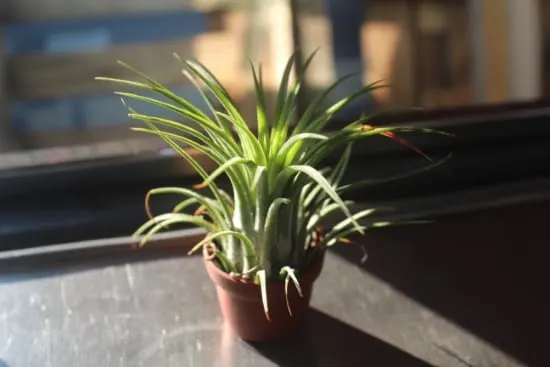
Bromeliads are long-living plants that are easy to take care of. These plants are native to the American continent and gained more popularity as indoor plants when explorers started to plant them in Europe.
Their durability and long-life make them a popular choice for many people.
Ideal Growing Conditions:
These plants prefer well-lit conditions but do not put them under direct sunlight. Maintain good airflow around these plants and also keep them moist.
The USDA hardiness zones for Bromeliads are 10-11.
4. Anthurium Andraeanum
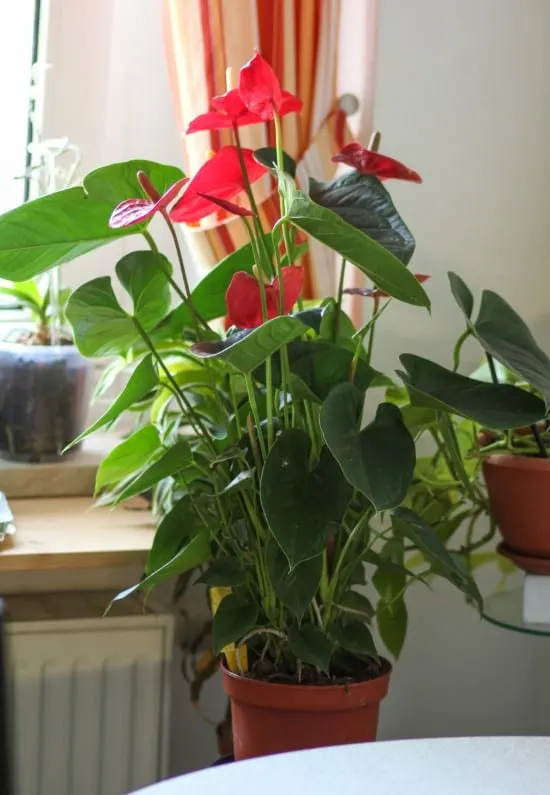
Of all the types of plants for the garden, Anthuriums are one of the finest. With their stunning pink, red, white, and black blooms, they’re sure to brighten up a garden or give it a totally new look.
These ornamental plants come in a range of cultivars, from tall to lanky.
Ideal Growing Conditions:
These plants can survive in low-light conditions but should ideally be kept in medium to well-lit rooms. They don’t require frequent watering and you can water them once a week to keep them in good shape.
The USDA hardiness zones for these plants are 11-12.
5. Maidenhair Fern
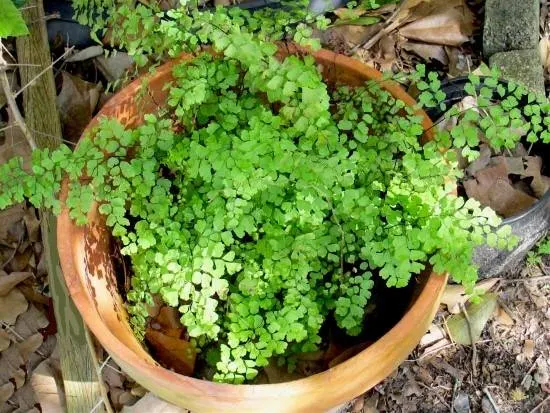
Maidenhair plants have a unique look, their delicate and small fan-shaped leaves are a treat to look at. These plants also have many health benefits, people use them for bronchitis, coughs, and other illnesses.
Ideal Growing Conditions:
Maidenhair Fern plants can survive in bright conditions, their soil should be kept moist, especially if they are placed in direct sunlight.
The USDA hardiness zones for Maidenhair Fern plants are 3-11.
6. Rubber Plant or Ficus Elastica
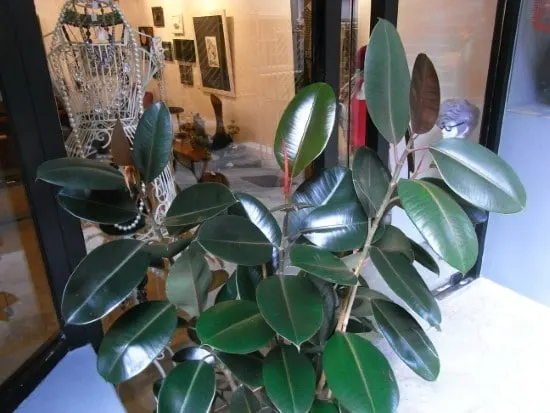
These plants are native to the Southeast Asia region, Rubber plants were used for making rubber, hence their common name. Rubber plants are low maintenance and are great air purifiers.
Ideal Growing Conditions:
They love to be in bright light, Rubber plants can even tolerate direct sunlight. You should water them on a weekly basis, be sure to let the soil dry out a little before watering.
The USDA hardiness zones for these plants are 10-11.
7. Sansevieria or Mother-in-law’s Tongue Plant
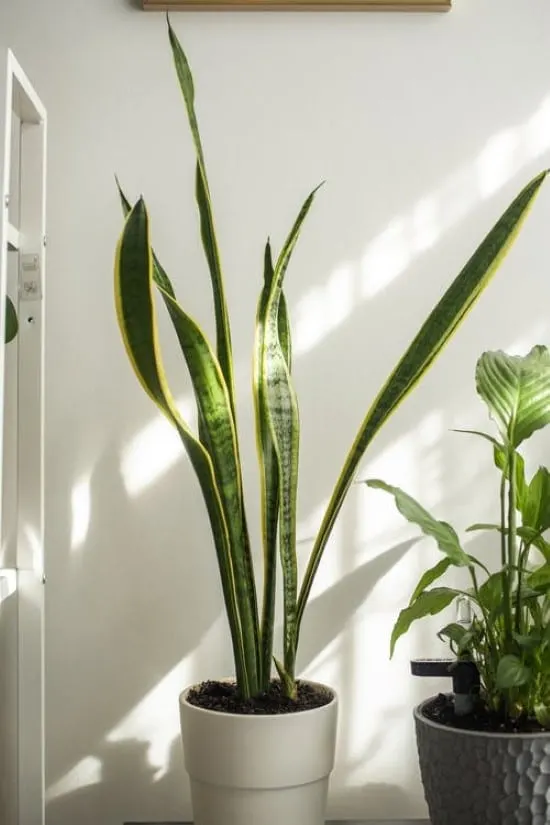
Sansevieria, is loved by many who enjoy its multifaceted elegance. The name, Sansevieria, translates as literally ‘Married to the string of a fan’ and this can be an apt description for this ever-popular species. They blend in perfectly with just about any colour scheme, perhaps with hints of blue or pink and of course with a touch of gold.
Their beauty is also quite fragile and are more suited to conditions that are slower growing.
Ideal Growing Conditions:
Sansevieria prefer medium to bright sunlight. Take care to maintain good drainage in their soils and water them once the soil has dried out.
The USDA hardiness zones for Sansevieria plants are 9-11.
8. Lady Palm
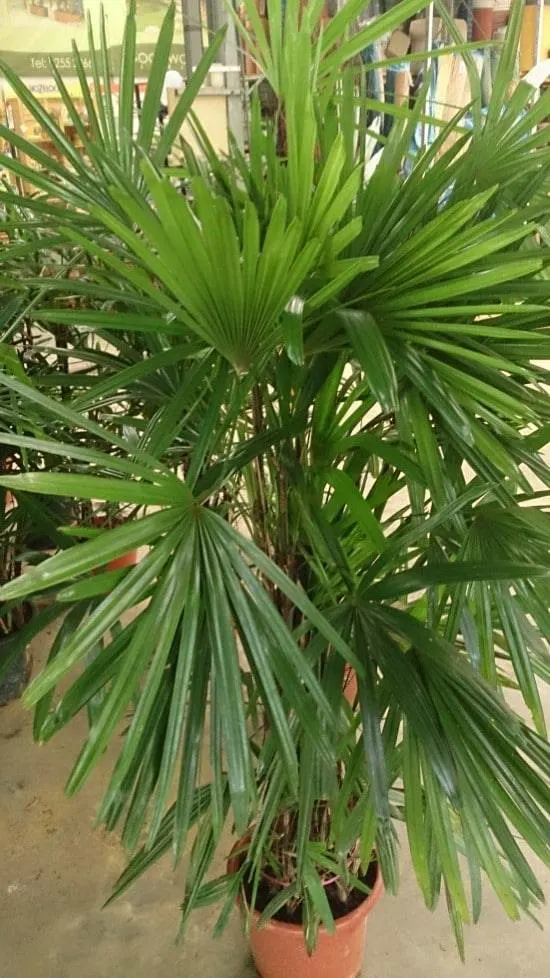
These palms are easy to maintain and are a great choice for beginners. Native to China, these plants are well-known for their exceptional air purifying abilities. These plants are also great for attracting butterflies.
Ideal Growing Conditions:
These plants can do well in any light conditions, just make sure that they are not in direct sunlight for too long. They can easily survive in any soil conditions as long it drains well and is slightly acidic.
The USDA hardiness zones for these plants are 8-12.
9. Dracaena Massangeana
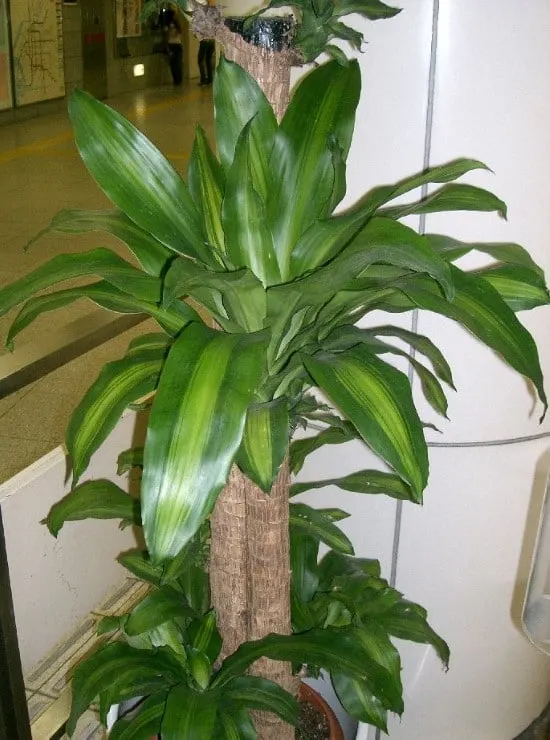
Dracaena Massangeana is a very popular shrub and it is well known for its ornamental value. Besides being a special favourite of indoor plant keepers, these plants also have practical benefits.
These plants are excellent air purifiers, Dracaena Massangeanas are known to absorb lead. They are also very attractive, the sword like leaves of these plants give them a very unique look.
Ideal Growing Conditions:
These plants should be kept in moderate to bright sunlight. Do not expose them to direct sunlight for too long though, as that can burn them. They don’t need to be watered too often, just make sure that their soil is slightly moist.
The USDA hardiness zones for these plants are 10B-11.
Best ways to Care for Indoor Plants
- Keep Them Indoors
Indoor plants generally cannot survive in direct sunlight. So, you should always make sure that your plants remain indoors and away from direct sunlight.
- Soil and Gardening Tools
There are several gardening books and YouTube videos you can watch that will help you out. The first thing you should get is soil. Get the container potting soil to put in it and get a pair of gardening shears and a trowel.
- Watering Indoor Plants
First thing is first, watering an indoor plant is one of the most significant parts of care. Let the water sit for about 30 minutes, and then take the plant out of the water.
Allow the leaves to dry and wipe with a paper towel. It will remove most of the water. If leaves are damp, you can try giving the plant a mist and gently patting with a clean towel.
Some plants do not require water, and others need it for proper growth. For blooming plants, water the plants once in a while when the soil feels dry. For dormant plants, water once a week and then add compost. Use a moist paper towel and lightly pat the bottom of the pot. Seedlings do not require any water.
- Lighting Your Garden
The best thing you can do to improve the conditions for your house plants is to use bright lighting, make sure that there is plenty of natural light reaching your plants.
Benefits of indoor plants
Indoor plants are known improve your mood. They reduce stress and lessen anxiety, particularly in people who are bored, alone, or have been under a lot of stress.
Just like humans, indoor plants need water to survive. It can take up to 50 gallons of water to keep a large pot of indoor plants alive. Keeping a plant in a small apartment or at work can be a strain on the water supply.
How to Get Rid of Houseplants Pests
Did you know that certain plants can be downright dangerous to pets and children? Choose indoor plants that are pest and disease-free, which is why most plants do not need to cut down completely. Doing so could expose a pet or child to dangerous problems.
However, while there are many benefits to keeping a plant in your home, you need to be aware that some houseplants are worse than others for attracting and spreading certain insects.
Some of these harmful insects cause diseases, pests and even threaten your home’s health. Take care of these problems before it becomes an even bigger problem.
First, there is one plant that you should not leave in your home if you have children or pets. Aphids are referred to as pests because they can carry diseases. They’ll hop onto a finger or a plant if they can, and you don’t want to be the one who spreads these germs.
The best way to handle an aphid infestation is to squash it before it gets any bigger. Next, you can treat most indoor houseplants for pest problems with a combination of both natural and chemical pest control products.
Here are the best organic and chemical houseplant pest products you can use on indoor houseplants.
- Natural products
You can treat indoor plants and trees using natural products such as oil of lemon eucalyptus or essential oils, says plant expert David Nelson, horticultural consultant, and author of “The Complete Book of Pruning & Fertilizing Plants in the Home”.
These products work to repel insects or reduce fungal growth on plants. Lemon eucalyptus oil is an efficient way of killing ants, and essential oils derived from peppermint and rosemary are used to control spider mites.
The best way to start is to make a paste of three drops of oil of your choice in one quart of water. Soak your plants’ leaves in this paste for 10 to 20 minutes and rinse thoroughly.
Follow up the next day with another coating. Apply this mixture to the base of the stem and any damaged parts, such as leaves.
Conclusion
With the continuously worsening air quality, indoor plants have almost become a necessity. Their ability to purify air is great for anyone who wants to live a healthy lifestyle.
Sure, you can buy electronic indoor air purifiers to maintain good air quality in your home. But the beauty of having a real, living, being that also purifies the air around you are unmatched.
Indoor plants are also known to improve mood and keep you in good condition mentally, so, they can be a great little tool for you to keep yourself occupied in bad times.
